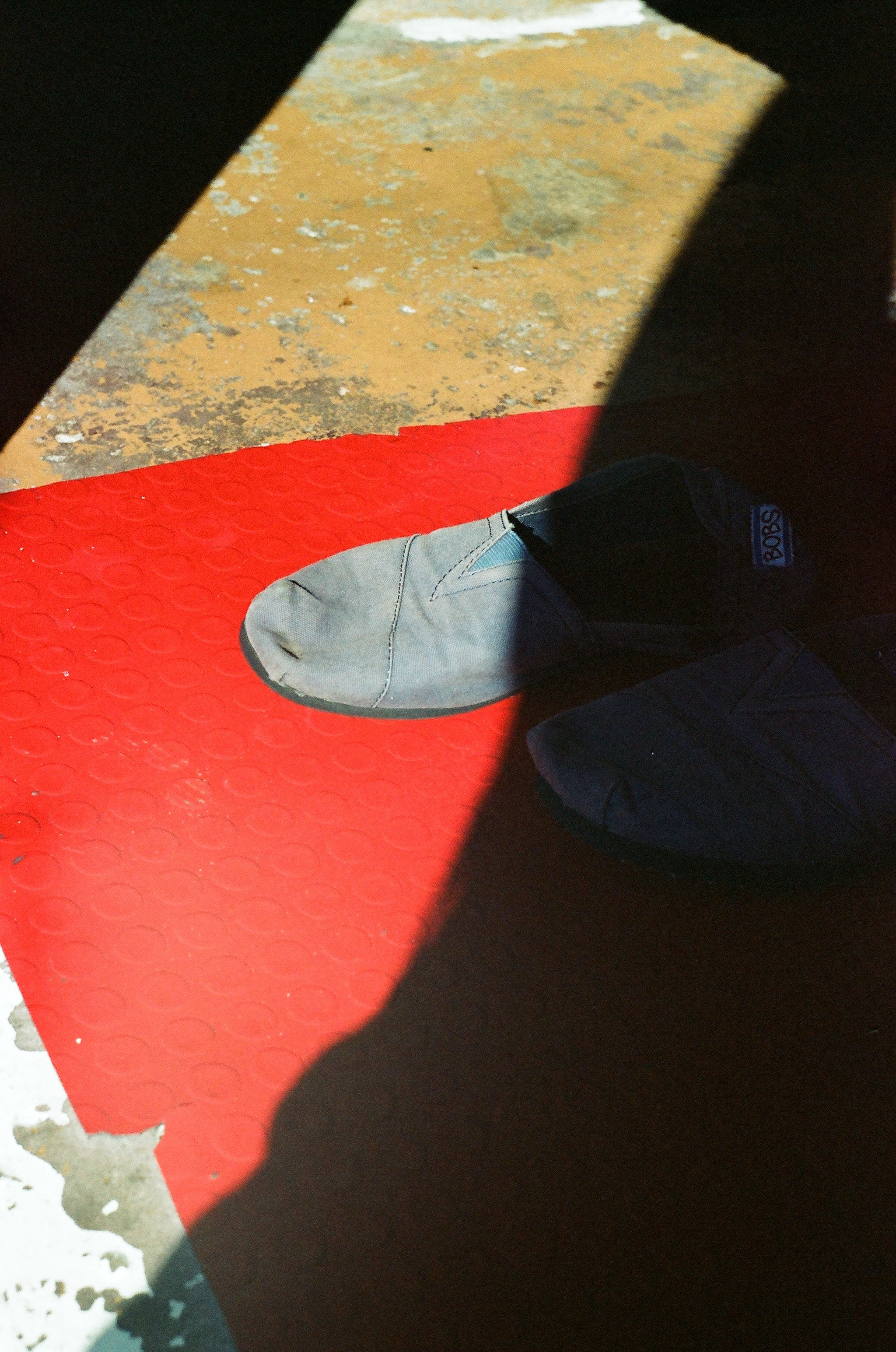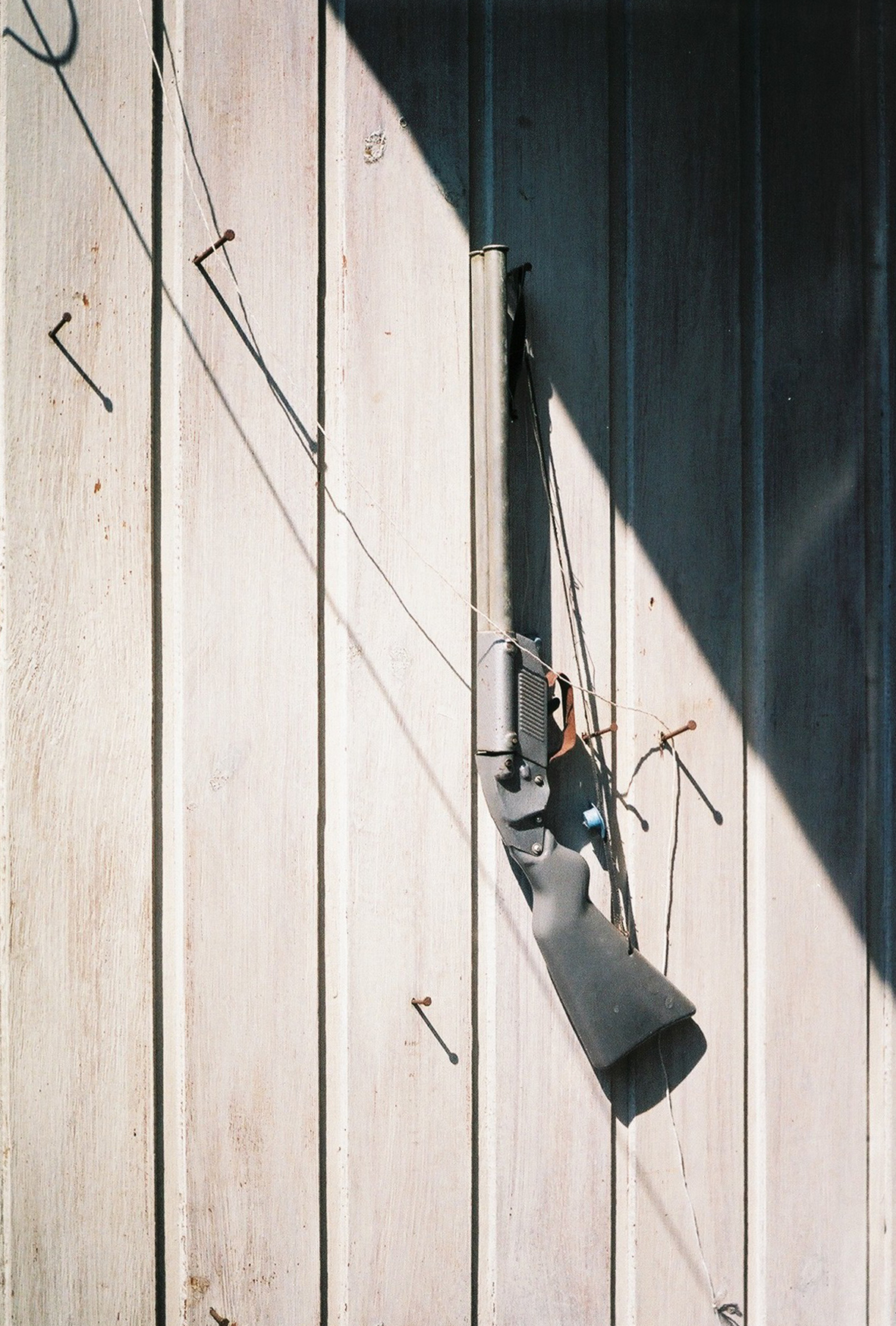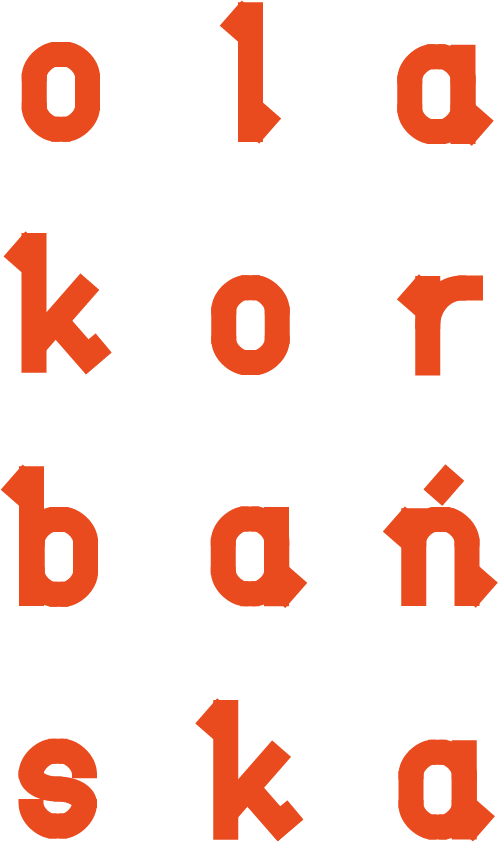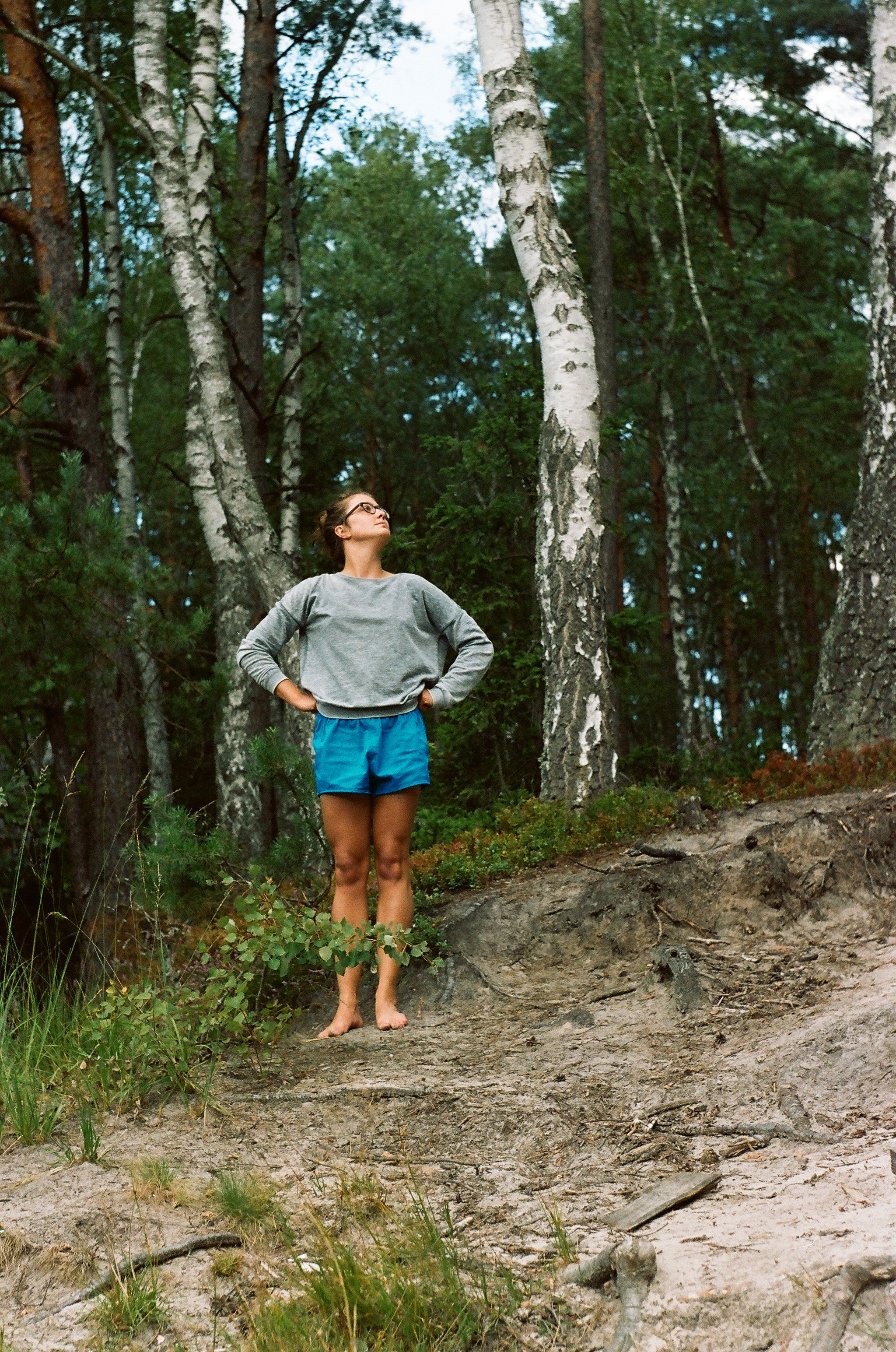BLUE ENCOUNTERS
2019
photographs + text
visual research and text was published in Hinterlands Magazine issue no.1 Blue, Berlin, 2020
2019
photographs + text
visual research and text was published in Hinterlands Magazine issue no.1 Blue, Berlin, 2020
Welcome to the countryside,

full of green and brown and yellow and orange, to a small village called Rzecin, located in the middle of the Noteć Primaeval Forest in western Poland, where all you can see is trees, hundreds of pine trees - vertical brown lines, all around. Welcome to the countryside: earthy, warm, a bit scratchy and conservative but welcoming, where the closest shop run by the same, sweet lady for the last twenty years is kilometers away and every evening during sunset, when everything becomes pink and grayish you can see noble cranes strolling slowly in high grass.

The countryside, where the color blue seems to break in from another world, looks artificial, out of place. Even if it is present on the plane of the sky, and on the other side — the surface of the lake as a reflection — it still strangely disappears in the green reality, it is absorbed by it. A scientific fact: the color blue is the rarest pigment encountered in the world of nature, and here, in the middle of the woods, you can experience that absence as real: blue is a sweetness of blueberries remaining on the tongue until the evening, a poisonous wild fruits, or an unusual treasure of jay’s feather found in the moss.




Here the blue color announces human intervention; blue of symbols and meanings, like a European flag on the box of matches, a blue plastic cup of the toy gun used by local kids while playing cowboys, or a rubber swim ring that has traveled all the way from China to amuse us by the lake.





